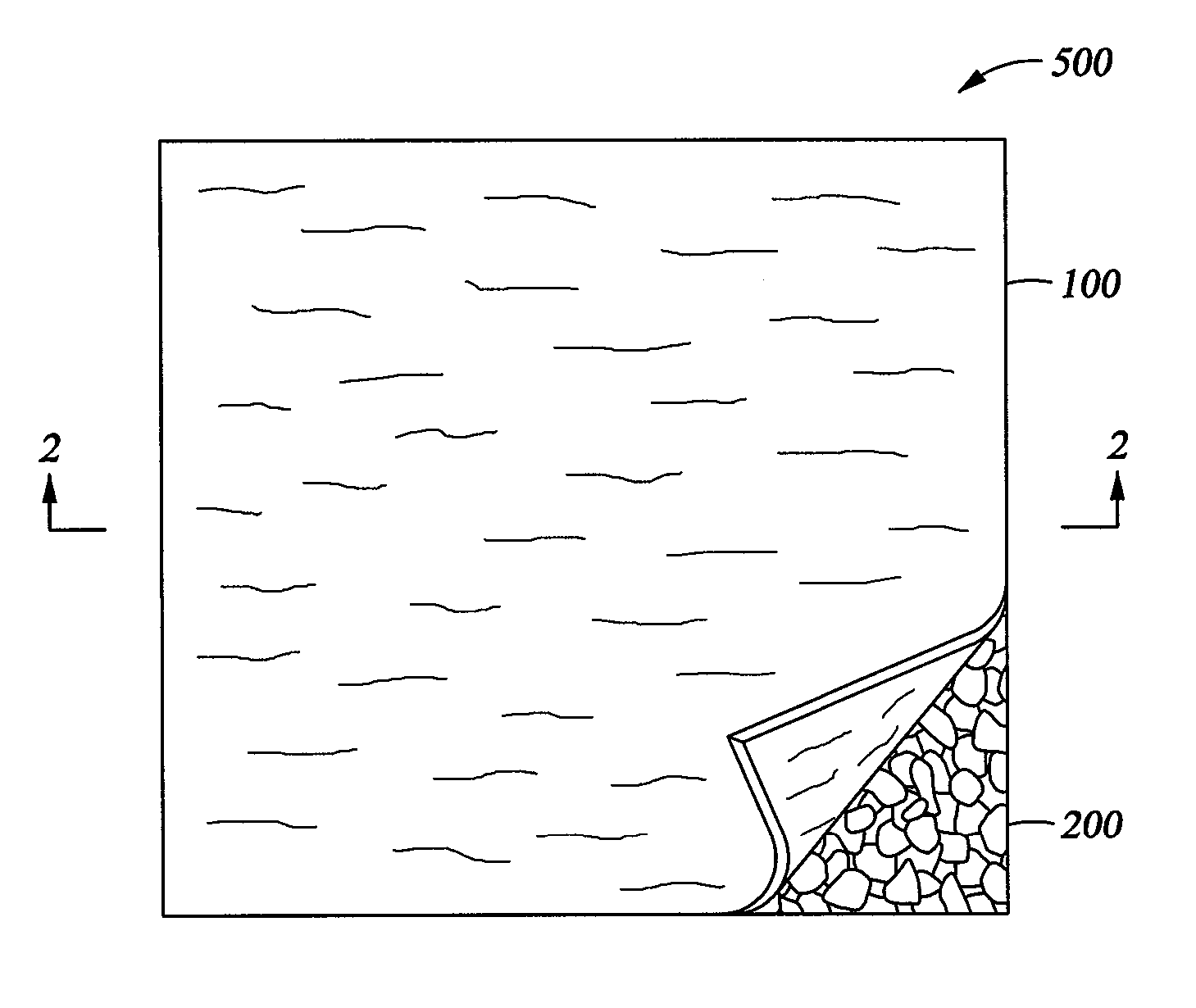Method for forming bi-layered fiber and foam carpet underlay
a carpet underlay and fiber technology, applied in the direction of carpet fasteners, weaving, bandages, etc., can solve the problems of carpet underlay which is hard, flat, may eventually decompose, not as soft, cushioning or resilient, and the foam to take on a yellowish tin
- Summary
- Abstract
- Description
- Claims
- Application Information
AI Technical Summary
Benefits of technology
Problems solved by technology
Method used
Image
Examples
Embodiment Construction
[0028] The method for forming a bi-layered carpet underlay comprises providing a layer of non-woven fibers and a layer of re-bonded foam particles and bonding the layers together. The method is illustrated in FIG. 1. In general, an adhesive 300 is sprayed onto a surface 102 of a continuous layer of non-woven fiber 100. While the schematic in FIG. 1 illustrates adhesive 300 being applied to surface 102 of non-woven fiber layer 100, adhesive 300 could also be applied to surface 202 of foam layer 200. The surface 102 of the non-woven fiber layer 100 contacts the surface 202 of the foam layer 200 to form the bi-layered carpet underlay 500 which is compressed to bond the non-woven fiber layer and foam layer together. For heat activated adhesives, the bi-layered carpet underlay 500 is heated to a temperature sufficient to cause the adhesive 300 to react and cure to form the bond between the non-woven fiber layer 100 and the foam layer 200. For cold adhesives, bonding of surface 102 of fib...
PUM
| Property | Measurement | Unit |
|---|---|---|
| density | aaaaa | aaaaa |
| thicknesses | aaaaa | aaaaa |
| length | aaaaa | aaaaa |
Abstract
Description
Claims
Application Information
 Login to View More
Login to View More - R&D
- Intellectual Property
- Life Sciences
- Materials
- Tech Scout
- Unparalleled Data Quality
- Higher Quality Content
- 60% Fewer Hallucinations
Browse by: Latest US Patents, China's latest patents, Technical Efficacy Thesaurus, Application Domain, Technology Topic, Popular Technical Reports.
© 2025 PatSnap. All rights reserved.Legal|Privacy policy|Modern Slavery Act Transparency Statement|Sitemap|About US| Contact US: help@patsnap.com



